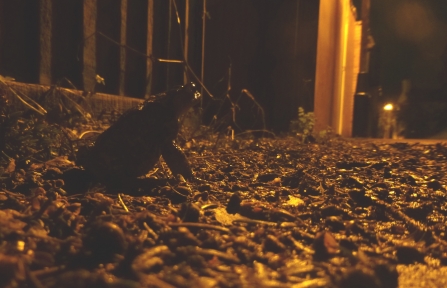Our native “common” toad is a rather different character. Cold blooded, shy and sluggish, he is more likely to crawl than hop. He is also a creature of habit. Toads tend to stick to their ancestral migration patterns in the mating season, no matter what might be in the way.
Toad’s reproduction has been the subject if fascination for children for centuries. After mating, the larger females lay strings of spawn wrapped around vegetation. Weather depending, tadpoles hatch a fortnight to a month later. The magical transformation of these shoals of helpless wrigglers, which grow first back then front legs, lose their tails and become toadlets, is one of nature’s wonders.




